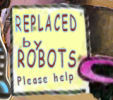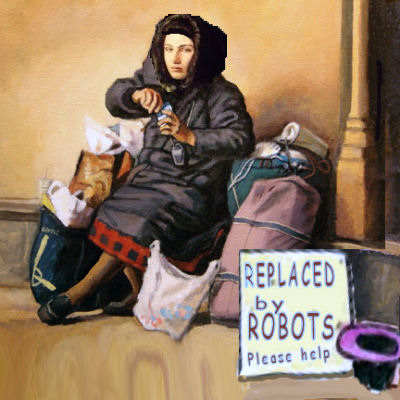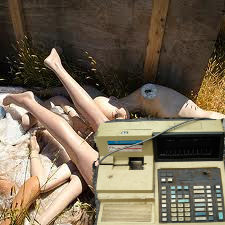What’s the Deal with Self-Serve Checkouts?
 I mean, why exactly do we have self-serve checkouts? Can anyone think of 1 good reason for them? They don’t increase efficiency because as my Kmart experience demonstrates, self-serve machines don’t create more service providers as the stores simply hire less staff.
I mean, why exactly do we have self-serve checkouts? Can anyone think of 1 good reason for them? They don’t increase efficiency because as my Kmart experience demonstrates, self-serve machines don’t create more service providers as the stores simply hire less staff.

Unhelpful machines
I felt compelled to write this article after a recent eye-opening experience I had at Kmart. During the busy late afternoon shift the store had one attendant on checkout – that’s right, one. I specifically joined the attendant’s queue instead of the 5 self-serve checkout machines as my item was discounted and may have required further assistance. As I joined the queue the customer being served was experiencing difficulties with her credit card so there was a considerable hold-up. While this problem was slowly being resolved the self-serve checkout supervisor indicated for me to join the aforementioned queue instead. I gestured that it was fine; I would remain in the queue for the attendant. As another 5 minutes went past with no further progress in the queue because the credit card issue was still unresolved, the self-serve checkout supervisor once again advised me to change queues. Once again I explained, this time at length, that I couldn’t use the self-serve machines as my purchase specifically required an attendant. Don’t get the wrong impression – the supervisor meant no harm, he genuinely thought he was assisting me by recommending the self-serve, sparing me the time and boredom of waiting in the long queue for the attendant. Eventually I was served by the attendant and the sale was processed without a problem but the whole experience left a lasting impact on me in questioning the role and function of self-serve checkout machines.
Creepy Self-service machines
I mean, why exactly do we have self-serve checkouts? Can anyone think of 1 good reason for them? They don’t increase efficiency because as my Kmart experience demonstrates, self-serve machines don’t create more service providers as the stores simply hire less staff. In fact, self-serve machines are responsible for even greater delays as they are more likely to malfunction and customers are slower completing their transactions than a qualified checkout operator. It is almost as if the people are warring against the machines for employment, like some sort of James Cameron sci-fi epic.
On top of these issues there’s something quite creepy about self-serve checkouts. Is anyone else unsettled by the booming computerised voice?
‘WELCOME TO [INSERT COMPANY NAME HERE]!’
‘PLEASE SELECT YOUR PAYMENT METHOD!!’
Is this supposed to constitute for a conversation? Some may sneer at this point, but a lot of shoppers genuinely value the polite ‘Hi, how are you?’ checkout operators are required to ask customers. At least it’s not a one-sided exchange. Companies invest millions of dollars in their customer service training programs for the very reason that customer loyalty is largely influenced by employee behaviour. Hence human servers are required for checkouts not only in the case of potential transaction problems like my Kmart experience but also in compliance with the friendly, helpful image of the company central to customer satisfaction.
Cheap mechanical slaves but purchase prices stay high
The widespread implementation of self-serve checkouts has significantly increased company profits. Although initially expensive to buy and install, in the long run a heavy duty self-serve machine is much cheaper to maintain than a checkout operator’s salary which comes with additional costs such as holiday and sick leave, workers’ compensation and time-and-a-half. A self-serve machine does not stop working over Christmas. It does not need time off because it caught the flu. Cemented to the ground means it can not slip on a wet floor and claim compensation. It does not demand extra pay for working on Australia Day.

Yet this reduction in service has not equaled a reduction in purchase costs. Australia has the most expensive groceries world wide. One wonders how much further consumers can be passed on the costs the store once provided. Customers aren’t even entitled to free plastic bags anymore and although this initiative has helped reduce waste, it hasn’t been without the additional store profit resultant from charging for canvas bags.
Unreasonable corporate profits
So what is the purpose of self-serve machines besides increasing the profit margins of already thriving multibillion dollar companies? Evidently, not much. However the ramifications have been significant for part-time employment, affecting the livelihood of university students and low skilled workers. Tertiary students rely on checkout work because of its flexible shifts. Balancing around different timetables from one semester to another means students need accommodating part-time work, something difficult to find in office jobs. Low-skilled workers rely on checkout for the different reason that it’s within their limited skills capacity. This condition serves a particularly important function as it provides work for disadvantaged employees who would otherwise likely be on welfare.
Call to boycott self-serve machines
Unfortunately for most customers it’s a ‘if you can’t beat em join em’ attitude on account that if self-serve checkouts aren’t used, queues for staff would be longer and after a hard day’s work or busy weekend few people are prepared to wait more than they have to and fair enough. However this situation unreprimanded will only get worse in the future as far as decreasing customer service, employment opportunity and workers’ rights. So I publicly call now for a boycott of self-serve check out machines because ultimately if no one uses them stores will be forced to remove them and employ more staff. This action would exclude self-serves that don’t reduce the total number of staff like at libraries. I am confident that if enough people take part in this stand we can make a difference.

Recent comments